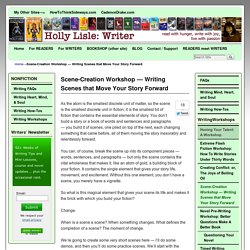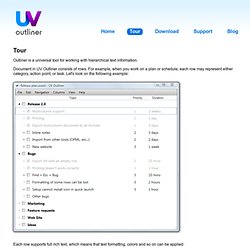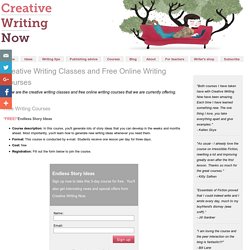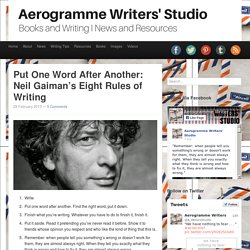

CELT: The online resource for Irish history, literature and politics. Welcome to Writing-World.com! 7 Essential Elements of Scene + Scene Structure Exercise. Today’s post is excerpted from The Plot Whisperer Workbook (Adams Media, 2012) by Martha Alderson.

Two lucky commenters were chosen to receive a free copy of the book: Tanette Smith and Mindy Halleck. Congratulations! In a scene, a character acts and reacts to people, places, and events. In this respect, scenes are the basic building blocks of your story. But, as with any structure, if you have the wrong scenes or if they’re assembled incorrectly, your story can—unexpectedly—collapse. As a pre-writing exercise, it’s helpful to generate and analyze scenes for your story. If you have no scene ideas, consider what your character wants and then visualize the steps the character will take to get what she wants. When generating a scene list, do not concern yourself with the specific elements in each scene. Creative Writing Tutorials. How To Write A Novel Using The Snowflake Method.
Scene-Creation Workshop — Writing Scenes that Move Your Story Forward. As the atom is the smallest discrete unit of matter, so the scene is the smallest discrete unit in fiction; it is the smallest bit of fiction that contains the essential elements of story.

You don’t build a story or a book of words and sentences and paragraphs — you build it of scenes, one piled on top of the next, each changing something that came before, all of them moving the story inexorably and relentlessly forward. You can, of course, break the scene up into its component pieces — words, sentences, and paragraphs — but only the scene contains the vital wholeness that makes it, like an atom of gold, a building block of your fiction. It contains the single element that gives your story life, movement, and excitement. Without this one element, you don’t have a scene, you merely have a vignette. So what is this magical element that gives your scene its life and makes it the brick with which you build your fiction?
Change. My WKB. Tour/ Outliner is a universal tool for working with hierarchical text information.

Document in UV Outliner consists of rows. For example, when you work on a plan or schedule, each row may represent either category, action point, or task. Let's look on the following example: Each row supports full rich text, which means that text formatting, colors and so on can be applied: If you work on a book or article, your outliner document may look like this: These are just two possible examples of outliner usage. Hoisting When your outline becomes big enough, it is very convenient to work with just some part of the document. This can be done by using Hoist feature from View menu. Export You can easily export your outline to the following document types: Rich Text document Text document HTML document Export window allows you to copy exported document to a clipboard instantly, without saving it to a file. Outlining in OneNote - OneNote Tips & Tricks. How to Write a Story – How to Write Fiction. Free Online Writing Courses - Creative Writing Classes in Fiction and Poetry.
"Both courses I have taken have with Creative Writing Now have been amazing.

Each time I have learned something new. The one thing I love, you take everything apart and give examples. " - Katlen Skye "As usual - I already love the course on Irresistible Fiction, rewriting a lot and improving greatly even after the first lesson. Thanks so much for the great courses. " - Kitty Safken “Essentials of Fiction proved that I could indeed write and I wrote every day, much to my boyfriend's dismay (waa sniff).” - Jill Gardner "I am loving the course and the peer interaction on the blog is fantastic!!! " "I'm enjoying the weekly email course, Essentials of Poetry Writing. "Thank you for all the material in this course. "I was pleasantly surprised at the quality of the lessons and feel they were very helpful in introducing new ideas and perspectives to my writing.
"Thanks very much for this course. "I'm learning so much. "Thank you so much!! "The Irresistible Fiction course is going well. Wp-content/uploads/2012/03/Perspective-Outline.pdf. Plot Development: How to write the climax and ending of your novel. By Glen C.

Strathy* Plot development is something you should think about after you have written a brief plot outline (Part 3). In this article, we're going to consider how to make sure the plot of your novel incorporates a satisfying climax and resolution. Many writers, especially pantsers, don't like to think about how their plot develops until they've written most of the first draft, preferring to let the ending evolve organically out of what comes before. Put One Word After Another: Neil Gaiman’s Eight Rules of Writing. WritePut one word after another.

Find the right word, put it down.Finish what you’re writing. Whatever you have to do to finish it, finish it.Put it aside. Read it pretending you’ve never read it before. Show it to friends whose opinion you respect and who like the kind of thing that this is.Remember: when people tell you something’s wrong or doesn’t work for them, they are almost always right. Story generator. The Fairy Name Generator.